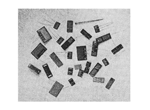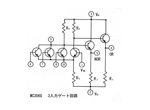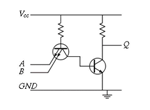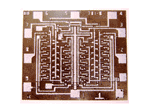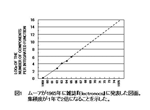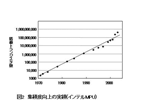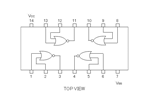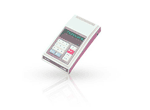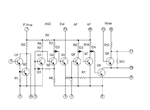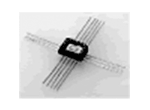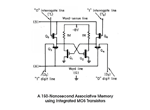Integrated Circuits
1960s
Decade of ICsTrial production of ICs in Japan started in the early 1960s, aiming at the commercialization of ICs. The mass production of IC products for radio and electronic calculators started towards the latter half of the ‘60s. Bipolar ICs were used in radios and MOS ICs were used in calculators. The introduction of transistor-transistor logic (TTL) and progress in MOS ICs marked the beginning of a long-term and continuous move to digitalization.
Early 1960s: Beginning of IC production in Japan
In the 1960s, including the early trial work by Yasuo Tarui at the Electrotechnical Laboratory and others, many companies in Japan started trial-production of ICs for practical applications. The Mitsubishi Electric Corporation’s Molectron was particularly well known. This IC was produced with reference to the samples from the Westinghouse Electric Company LLC.
1961: Introduction of RTL (Fairchild Semiconductor, U.S.A.)
Fairchild, where Noyce invented the planar IC, developed the mL900 family of resistor-transistor logic (RTL). A representative product from that family, the mL914, incorporated resistors and transistors to form dual two-input NOR gates. RTL products were also released by other manufacturers such as Motorola, Inc. RTL was used in the computers for the Apollo program.
1962: DTL goes on sale (Signetics Corporation, U.S.A.)
The development of diode-transistor logic (DTL), which was fast in performance and small in layout areas, followed RTL. Signetics released commercial DTL products in 1962 and were followed by Fairchild and Westinghouse products in 1963. Ferranti International Inc. (U.K.) also released DTL products around the same time. IBM used DTL to form all of the logic in developing the 1401 computer. However, RTL and DTL would gradually be replaced by a subsequent technology, TTL.
1962: MECL- I ICs featuring ECL go on sale (Motorola, U.S.A.)
In 1956, Hannon S. Yourke of IBM invented the emitter-coupled logic (ECL) circuits for super-high-speed logic elements. The circuits did not initially take the form of ICs. ECL circuits were used in the IBM 7030 Stretch, which was considered a super-computer at the time. In 1962, Motorola began selling ECL ICs under the name MECL-I.
Mid-1960s: TTL appears (Texas Instruments, U.S.A., and others)
In 1961, James L. Buie of TRW Inc. invented transistor-transistor logic (TTL). Sylvania Electric Products and other companies released commercial TTL products in 1963. Of these products, the 5400/7400 series from TI became the de facto standard, with many similar products being produced.
Mid-1960s: Mass-production of ICs for calculators begins
Transistors were initially used for the circuits of electronic calculators, and they were replaced by MOS ICs from the mid-1960s. This created the first substantial demand for MOS ICs. In the beginning, one calculator used several tens of ICs. Integration rapidly advanced until only several chips were required, single-chip designs eventually appearing in the early 1970s.
1965: Moore's Law proposed (Gordon E. Moore)
Gordon E. Moore, working for Fairchild at the time and later a co-founder of the Intel Corporation, predicted in Electronics Magazine (April 19, 1965) that 65,000 elements would be integrated in 1975, based on the fact that the number of transistors integrated on a semiconductor device doubled every year up to that time (1965). The rate was later modified to doubling in every 18 to 24 months. What is now known as Moore's Law – that the number of transistors that can be integrated on a chip doubles in a specified period – has provided a basic guideline both for semiconductor technology development and for company management for over 40 years.
1968: CMOS general-purpose logic ICs appear (RCA, U.S.A.)
In 1968, RCA released the commercial 4000-series of CMOS general-purpose logic ICs. CMOS general-purpose logic was slower than TTL but consumed less power and supported a wider range of operating voltage. CMOS logic was initially not compatible with TTL, but products compatible with TI’s TTL 7400 series were later released and CMOS logic came to be widely used ever since.
1969: Production of PMOS LSIs for calculators begins (North American Rockwell, U.S.A.)
In 1969, Hayakawa Electric Industry (now the Sharp Corporation) developed an LSI-based calculator – the microCompet QT-8D – using an LSI manufactured by North American Rockwell. The QT-8D, which incorporated four state-of-the-art LSI chips and cost less than 100,000 yen, came to dominate the market. This success encouraged aggressive development of LSI circuits for calculators by Japanese manufacturers.
Late 1960s: Analog ICs produced for consumer use
As IC development progressed, the field of semiconductor applications broadened to encompass consumer-use products. High-frequency characteristics were improved and output voltages increased; the development of ICs providing optimal functions for products in individual fields of application began.
Late 1960s: Beginnings of MOS memory
Semiconductor memory development started with bipolar SRAM and the development of MOS SRAM started somewhat later. The NEC Corporation developed 144-bit NMOS SRAM in 1968 and incorporated it into a mainframe computer delivered to the Nippon Telegraph and Telephone Public Corporation. For DRAM, Robert H. Dennard of IBM invented the one-transistor memory cell and applied for a patent in 1968. Intel, founded in 1968, planned to develop DRAM composed of three-transistor cells and worked towards realizing this.


